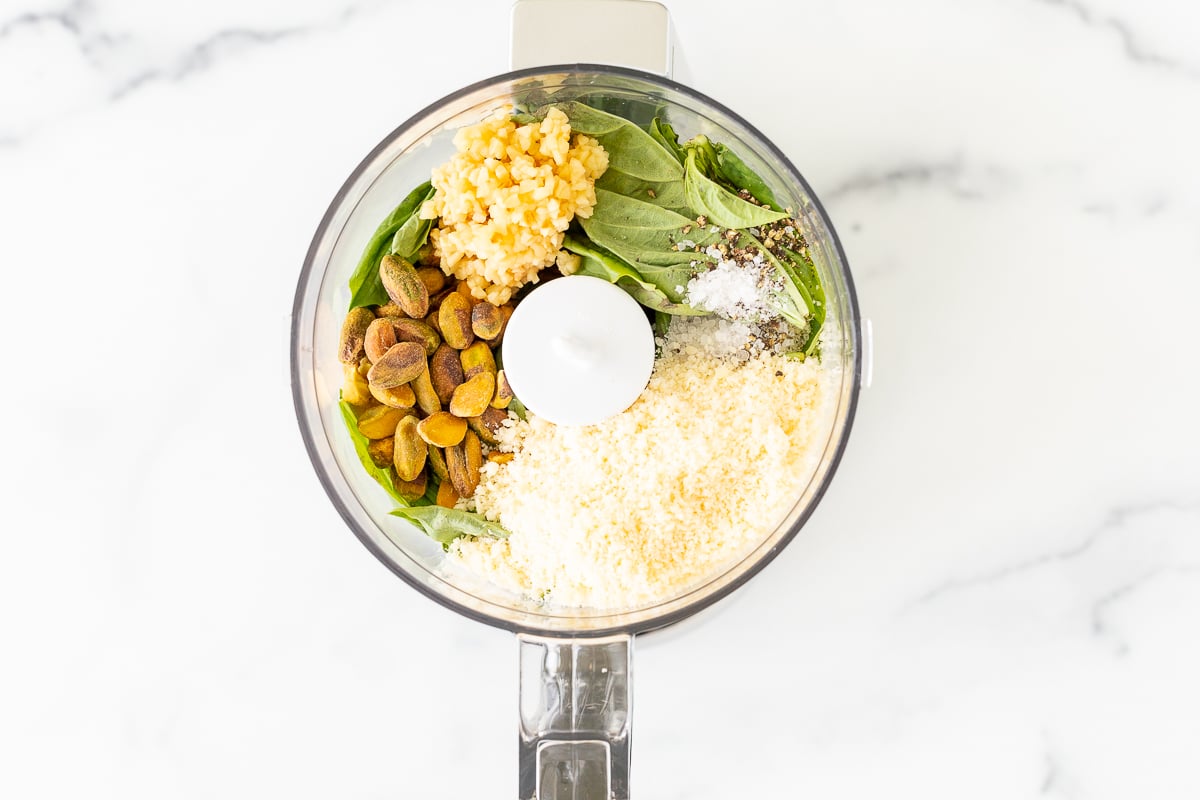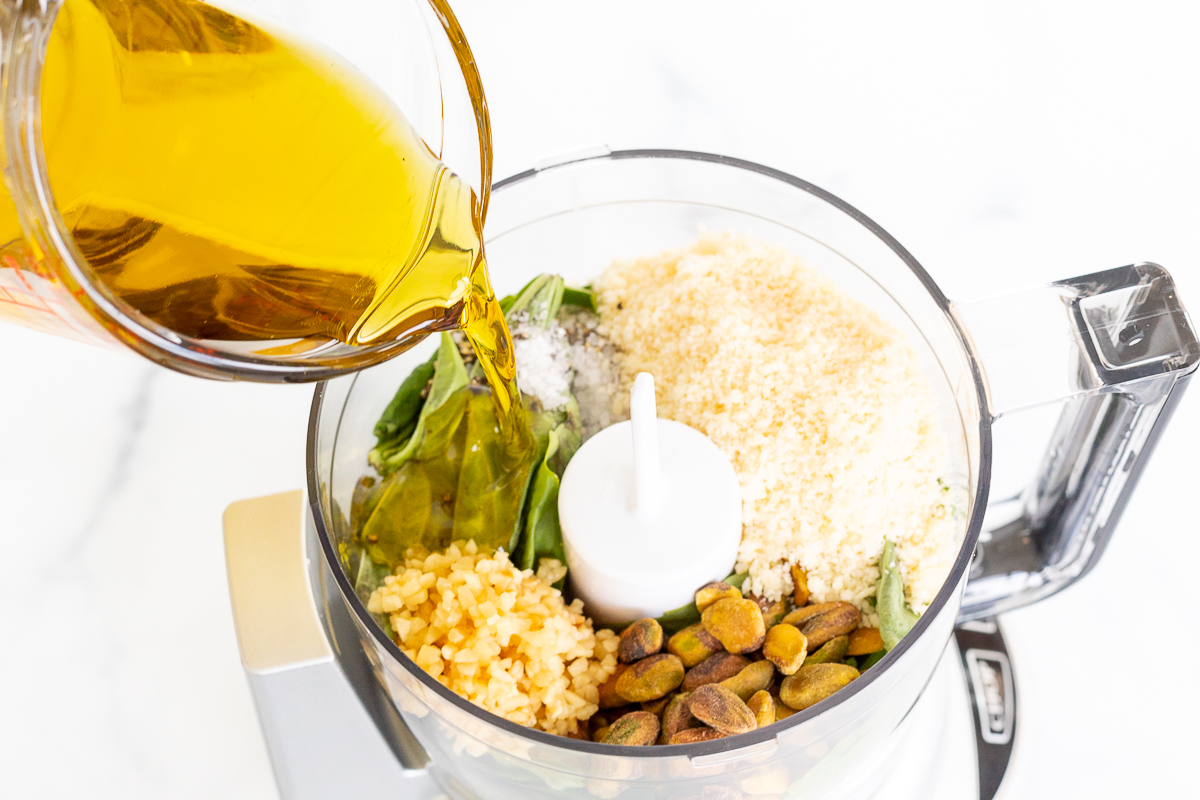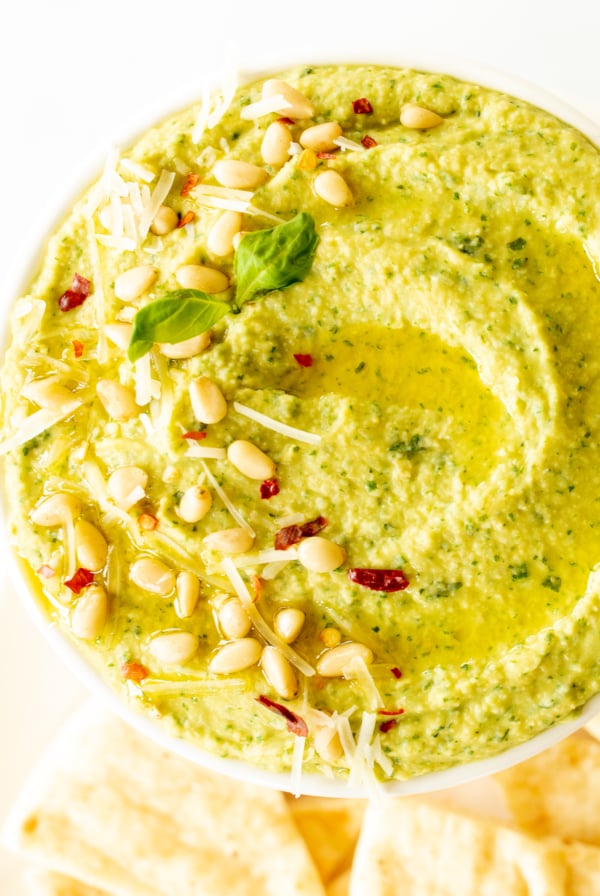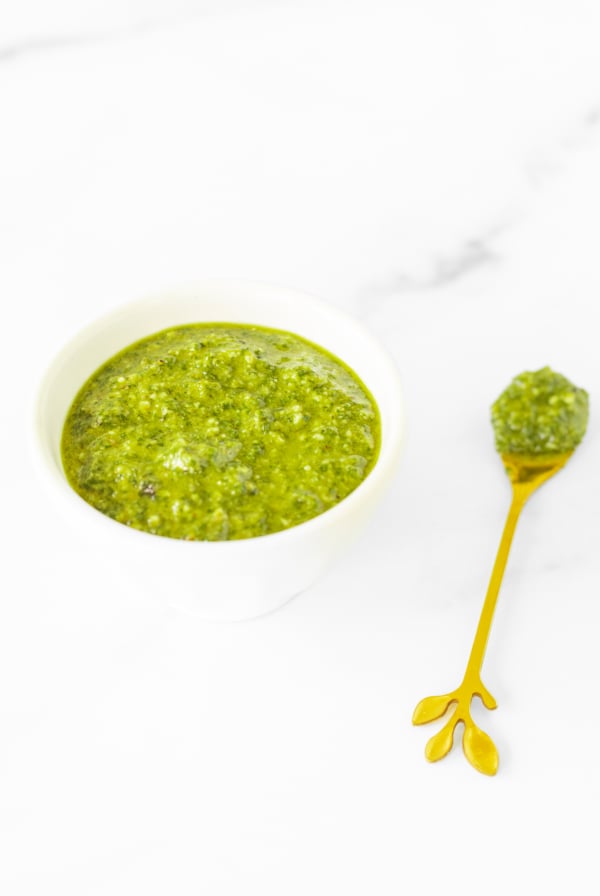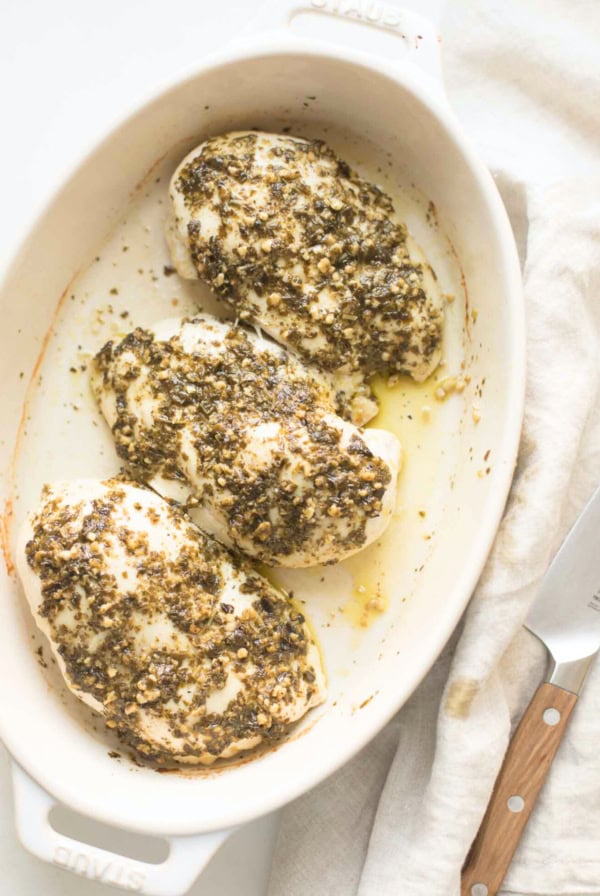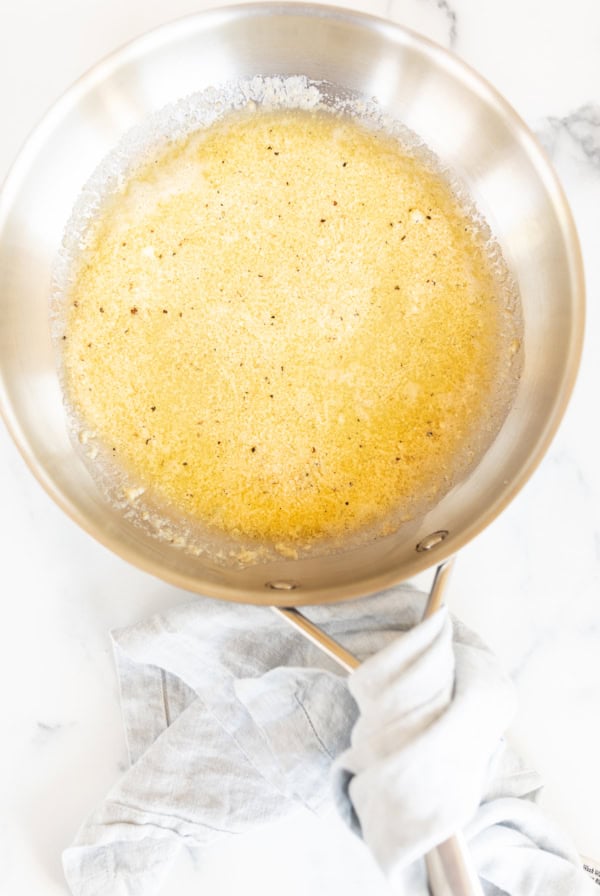This pistachio pesto recipe replaces traditional pine nuts with pistachios. The change is subtle but distinctive, and it’s full of the vibrant, textural pesto flavor you know and love!
Filled with all the classic flavors of garlic, fresh basil and parmesan, this pistachio pesto is a delicious addition to so many of your favorite meals.
Blend it together in just minutes in your food processor or blender, and you’re on your way to something truly delicious!
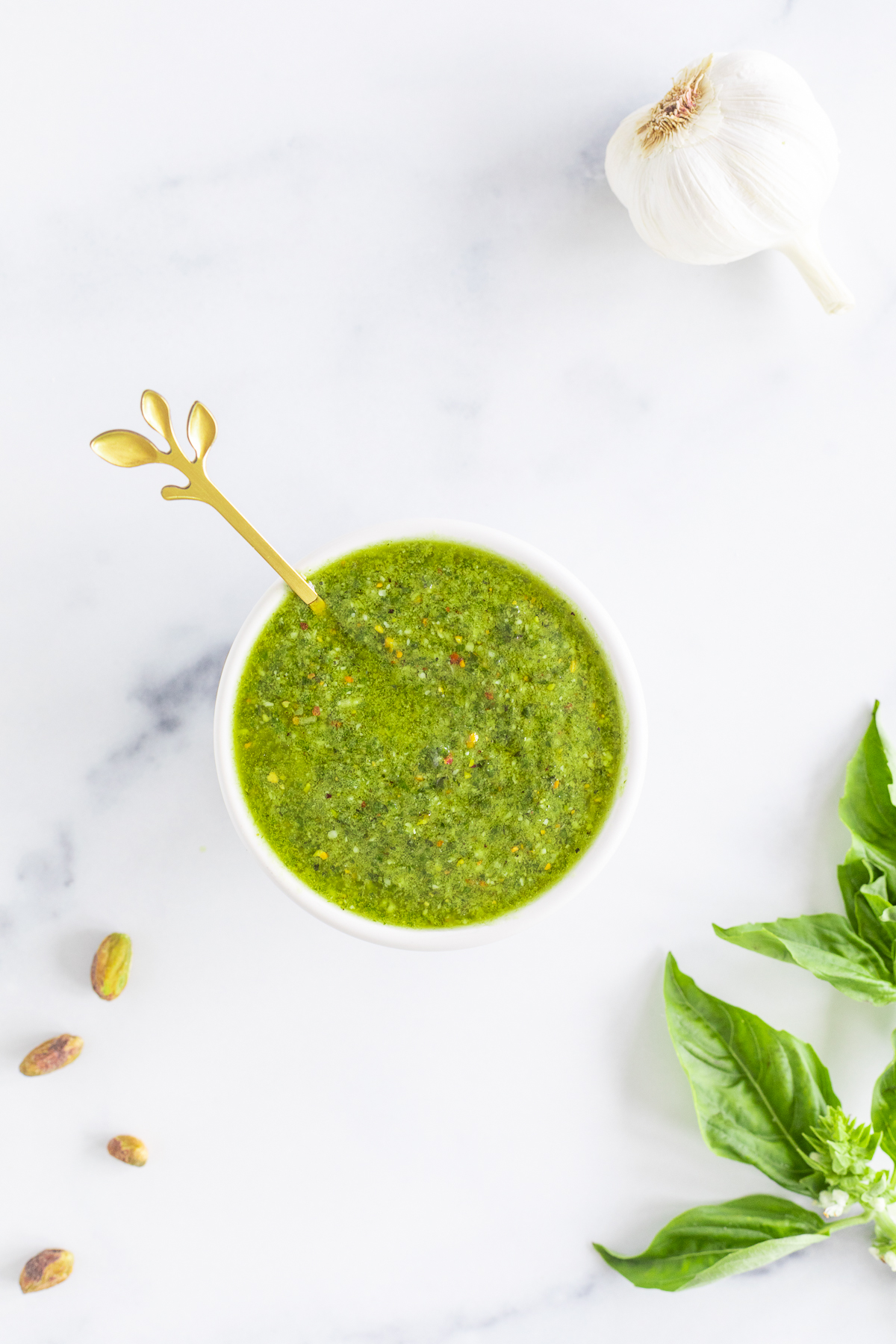
Serve this pesto over a bed of pasta, slather it over your crostini or toast, or top your favorite proteins or vegetables.
In fact, pistachio pesto can be used just about anywhere. It makes a wonderful appetizer and it’s perfection as a topping during grilling season.
We’re going to show you how simple it is to make it, and all the fun ways to incorporate it into your favorite meals. Pistachio pesto is a fresh, simple way to update a classic recipe and turn it into something new!
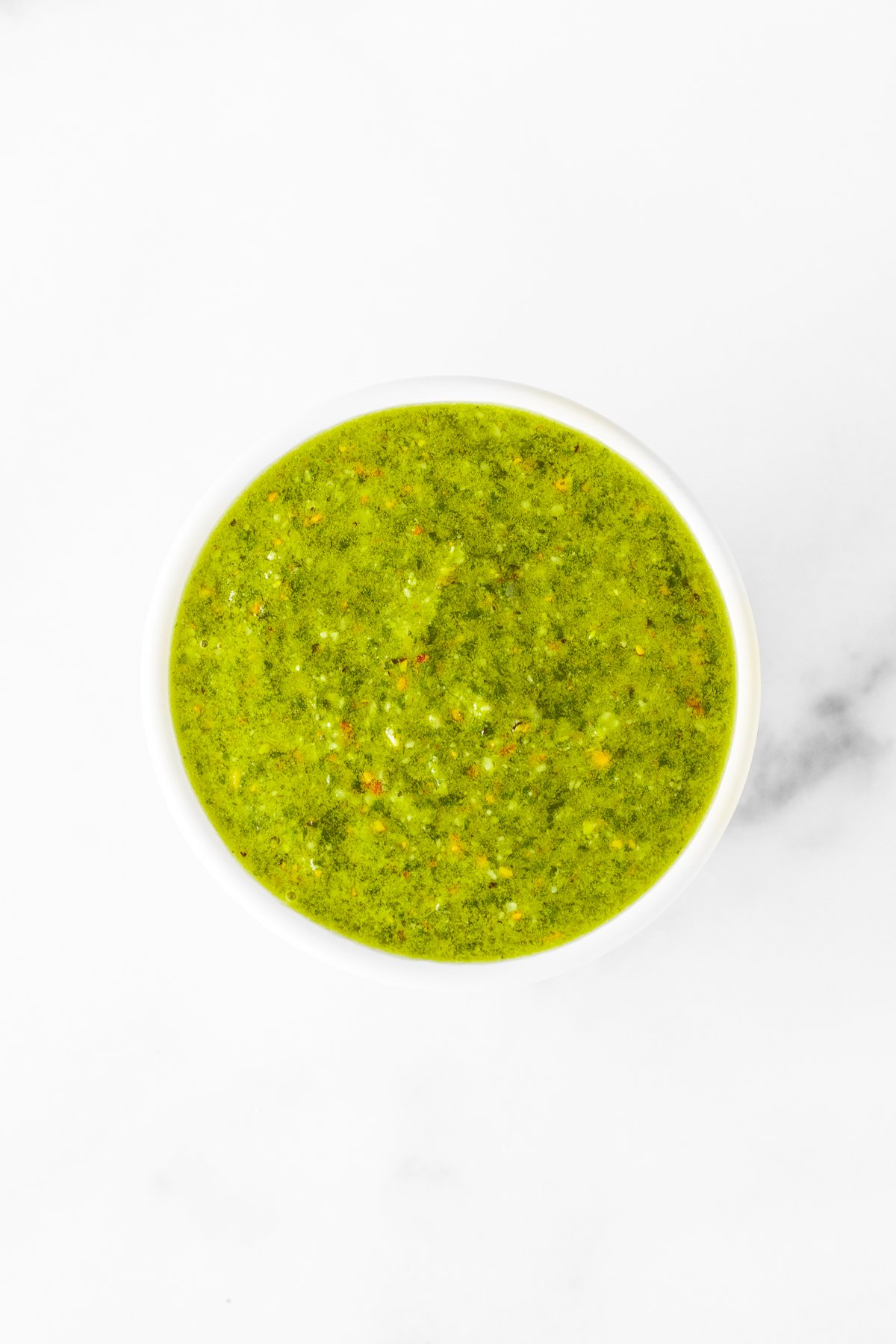
Pistachio Pesto
Try this pistachio pesto for a fresh spin on a timeless favorite! Pistachio pesto is wholesome, too – it’s low carb and low calorie, but packs a big punch of flavor.
Why You’ll Love It
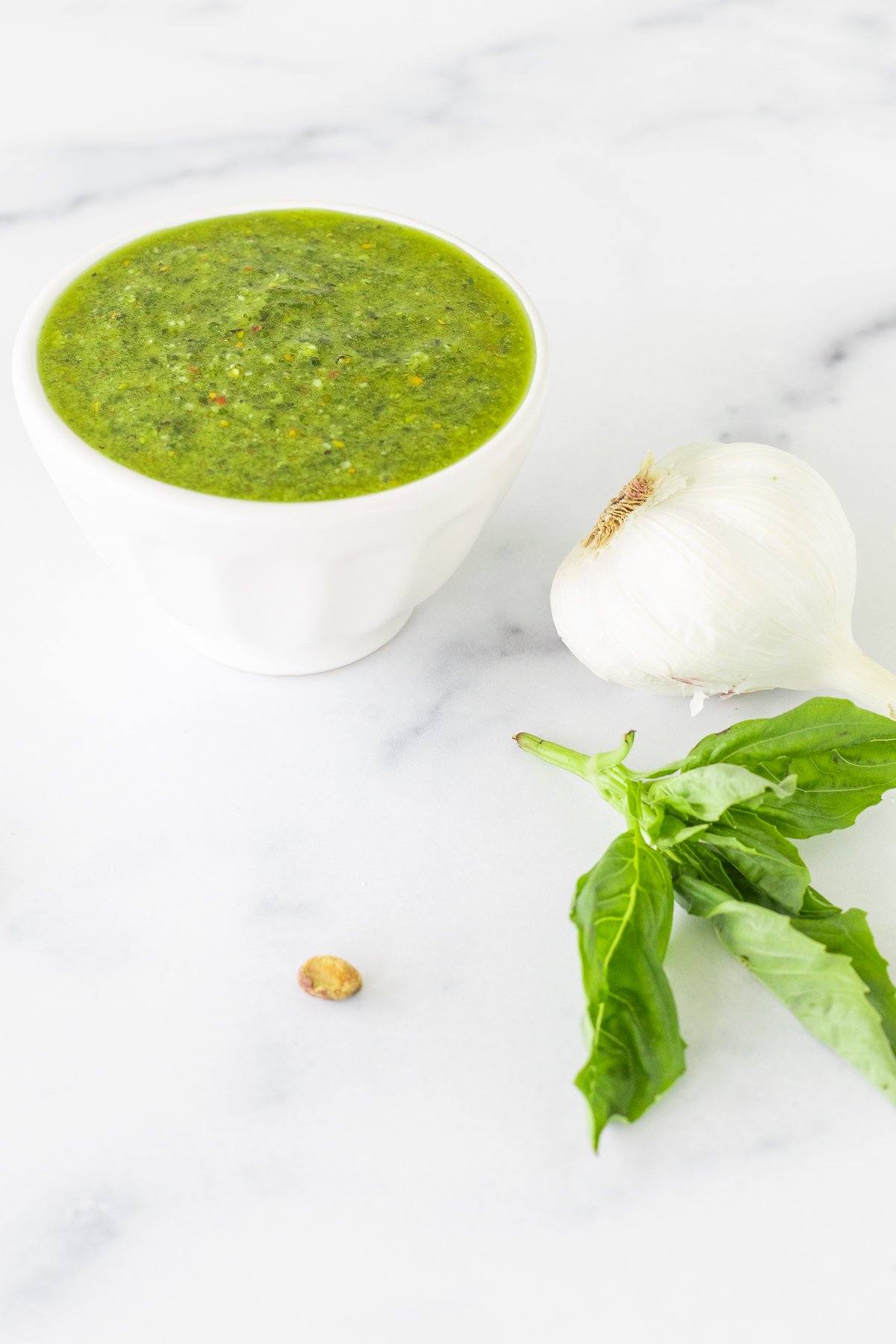
Ingredients and Substitutions
- Basil – Fresh, tightly packed.
- Pistachios – These add a textural element to the pesto, with a slightly sweeter flavor profile vs. traditional pine nuts.
- Minced Garlic – Fresh is best, but if you want, you can always use a jar of bottled minced garlic from the store. Learn all about how to mince garlic here.
- Parmesan Cheese – Fresh grated is best, don’t skip this step! Learn how to grate cheese here.
- Salt and Pepper – to bring out all the other fresh flavors!
- Extra Virgin Olive Oil – Essential to good pesto.
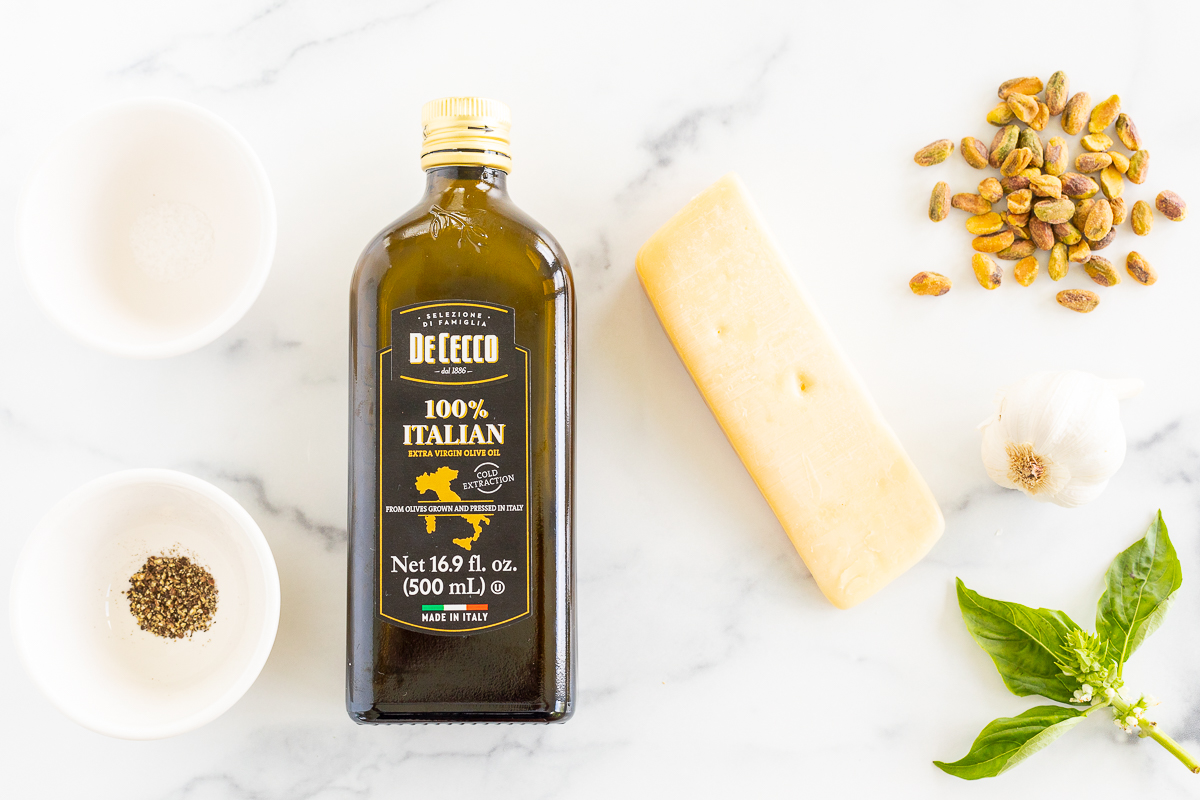
Variations
- Try Walnuts – Sub the pistachios in the recipe to make a walnut pesto instead.
- Parsley – Or, switch the basil out and use parsley for a parsley pesto!
- Leave the Nuts Out – for a Nut Free Pesto.
- Pesto Rosso – Another delicious way to upgrade your pesto – try adding sun dried tomatoes.
How to Make
- Add all ingredients (except olive oil) to a blender or food processor.
- Slowly drizzle in the olive oil as you blend the other ingredients.
- Store in a container with an airtight lid, or follow the tips below to freeze your pesto.

Tips
- To prolong the life of your fresh basil, trim the stems much like you would fresh flowers. Add to a jar or vase of water.
- This recipe makes about 3/4 cup of pesto.
- To scale this recipe, simply use the 1x2x3x tab inside the printable recipe card. Or, you’ll love this printable Measurement Conversion Chart!
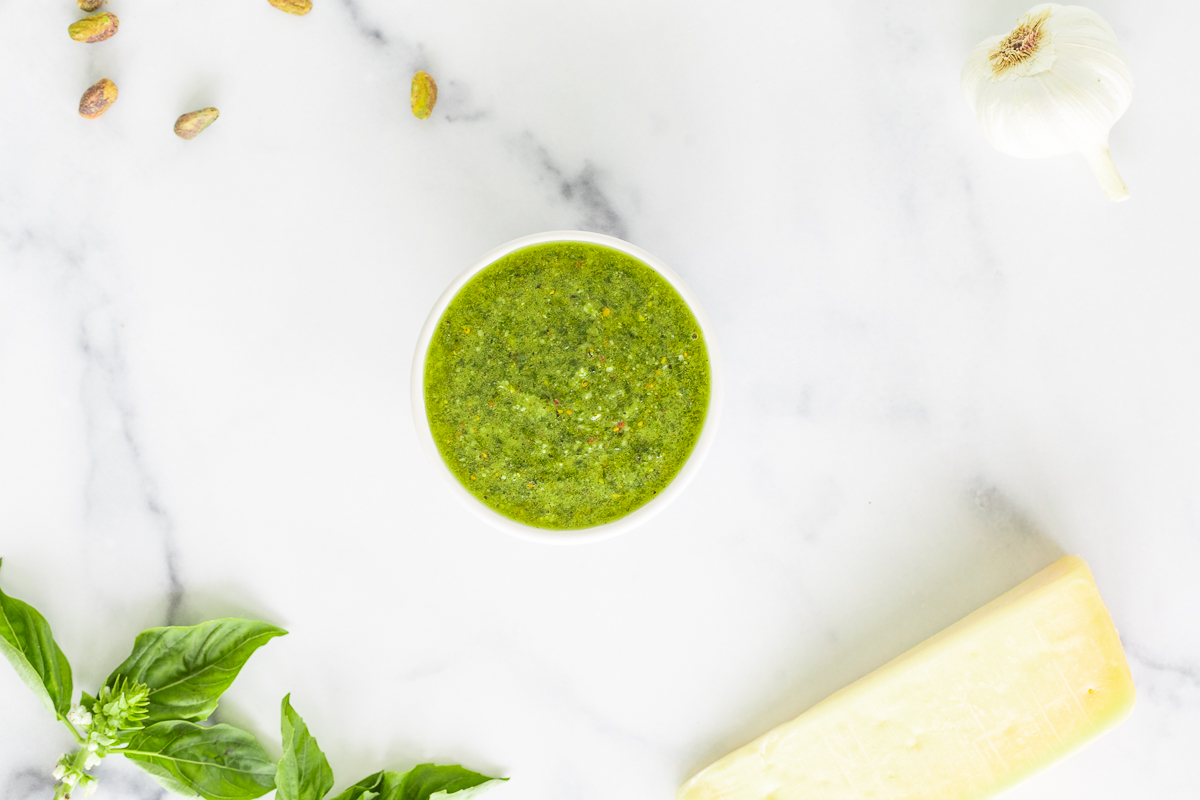
Serving Suggestions
- Top steak, chicken, seafood or pork (after preparing)
- Brush onto chicken to make pesto chicken
- Try this pesto dip
- Spread onto Crostini
- Mix into artisan bread dough before baking
How to Store
- Room Temperature – This pesto can sit out at room temperature for up to two hours while serving. After that, it should be refrigerated to preserve freshness.
- Refrigerate – Transfer to an airtight container. Adding a layer of olive oil prevents the basil from oxidizing. Pesto keeps in the refrigerator for up to a week.
- Freeze – Freeze pesto in an ice cube tray (or sheet pan), then transfer to a freezer bag. Frozen pesto stores very well for up to six months. To use, simply defrost the cubes in your refrigerator overnight, or stir the cubes directly into hot pasta for the easiest sauce.
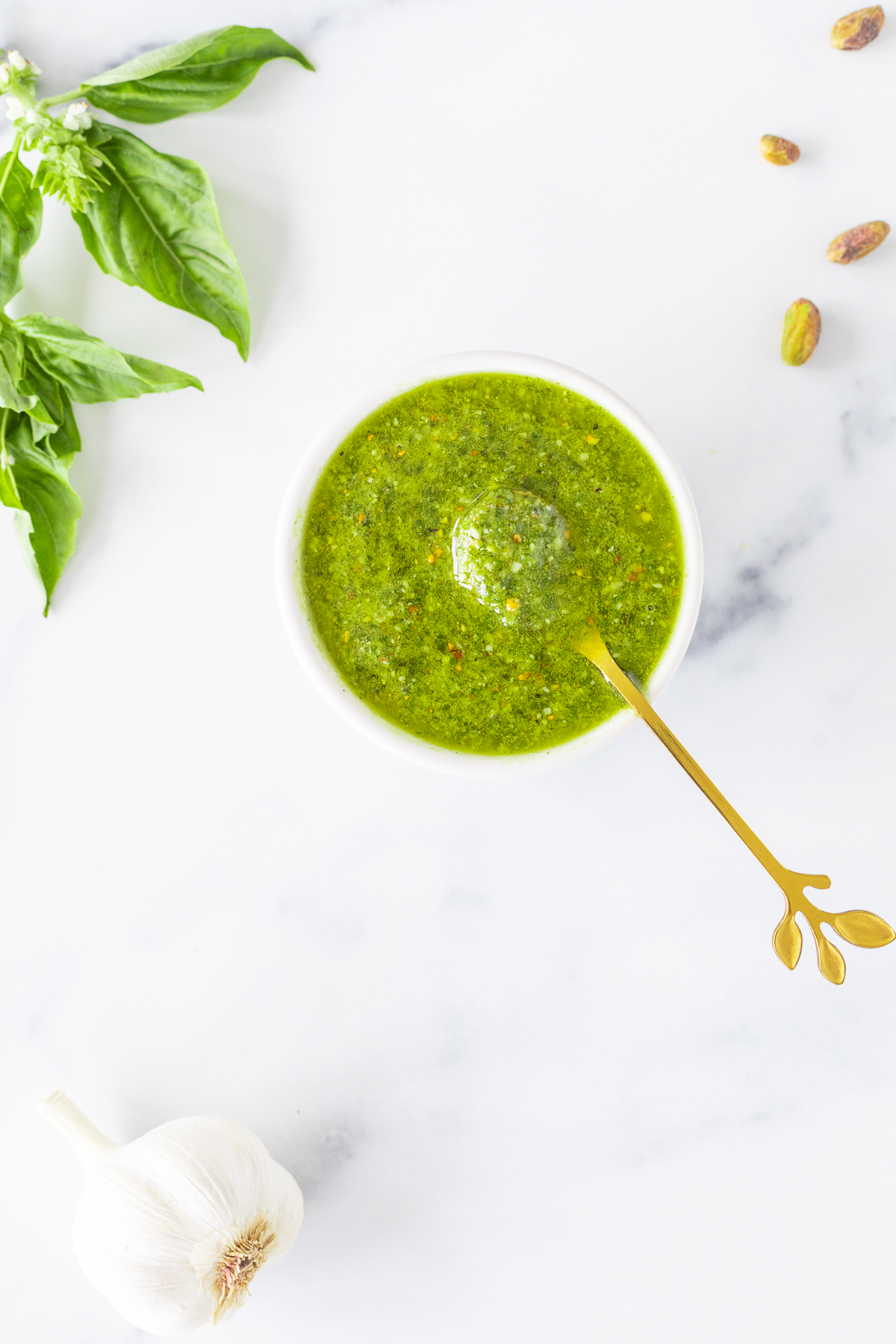
More Pesto Inspiration
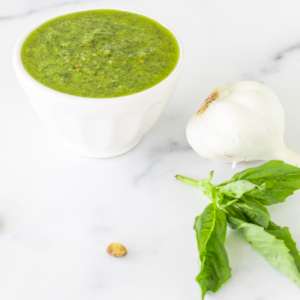
Pistachio Pesto
Ingredients
- 2 cups basil fresh, tightly packed
- 2 tablespoons pistachios
- 1 tablespoon minced garlic 2-3 garlic cloves
- ¼ cup parmesan cheese fresh grated
- ¼ teaspoon salt
- ¼ teaspoon black pepper
- ½ cup extra virgin olive oil
Instructions
- Add basil, pistachios, garlic, parmesan, salt and pepper to a blender or food processor.
- Slowly drizzle in the olive oil as you blend the other ingredients.
- Store in a container with an airtight lid, or follow the tips below to freeze your pesto.
Julie’s Tips
- To prolong the life of your fresh basil, trim the stems much like you would fresh flowers. Add to a jar or vase of water.
- This recipe makes about 3/4 cup of pesto.
How to Store
- Room Temperature – This pesto can sit out at room temperature for up to two hours while serving. After that, it should be refrigerated to preserve freshness.
- Refrigerate – Transfer to an airtight container. Adding a layer of olive oil prevents the basil from oxidizing. Pesto keeps in the refrigerator for up to a week.
- Freeze – Freeze pesto in an ice cube tray (or sheet pan), then transfer to a freezer bag. Frozen pesto stores very well for up to six months. To use, simply defrost the cubes in your refrigerator overnight, or stir the cubes directly into hot pasta for the easiest sauce.
Estimated nutrition information is provided as a courtesy and is not guaranteed.
